Lotus Exige 240R
Is this supercharged beast the ultimate Exige? Steve Bennett finds out.
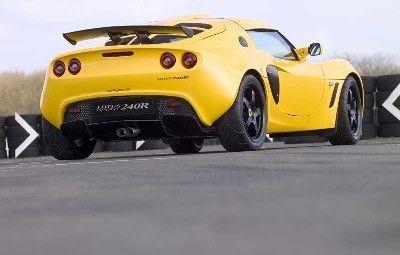
Lotus Exige 240R: the only view you'll get
Before we go any further I should warn you that the Lotus Exige 240R, the car I’m about to get very excited about, is sold out. Just 50 have been built and they’ve all gone. What’s more there won’t be any more. “Really,” I enquire? “Not even a conversion kit for owners of existing S2 Exiges?” Apparently not. If you are one of the lucky 50 then you’ve got yourself an exceptional car.
So what’s so special? Well the simple version is this. The Exige 240R is a supercharged version of the standard car. As ever, though, the subtleties and nuances created by this bolt on power pack, plus the new suspension package, have created a car with a wholly different character.
Adding power
As the name suggests, the Exige plus supercharger boosts the power to 240bhp (243bhp to be precise). It’s the result of various feasibility studies carried out by Lotus Engineering into supercharging four-cylinder engines, work carried out for outside clients but with an obvious application in-house.
A boost to the power output of the standard 190bhp Toyota engine (the Toyota VVTL-I 2ZZ-GE unit to give it its full title) was also being looked into at the same time with Toyota supplying all sorts of trick pistons, cams, rods, throttle bodies etc, but the cost of getting another 20bhp out of the 1800cc unit was simply prohibitive. It would also have turned an already peaky engine into a serious screamer and would have undoubtedly have required shorter gearing to make it work. More expense.
The supercharger route was, then, obvious. Toyota already produces supercharger kits in the US for the 1.8-litre engine, but Lotus decided to go its own way. But why a supercharger over a turbo anyway?
Turbo v supercharging
There’s no doubting that a supercharger gives a more even spread of power and, unlike a turbo, it keeps on going. Lotus has had plenty of experience with small capacity turbos with the Vauxhall VXR220 Turbo. Like many blown cars it makes rapid progress but in a series of surges. It’s not so noticeable on the road but on the track the turbo does its stuff and then just goes flat. It feels very odd.
Lotus has employed a Rootes-type Eaton M62 supercharger. It would be simplistic to say that it just bolts onto the standard Toyota engine but in fact it’s not actually far from the truth. The engine really is unmodified, save for a thorough reworking of the Lotus T4 engine management system which takes care of fuelling and ignition and the now lower rpm switching of the cam profiles. Like turbos, superchargers like to gorge on fresh air and a massive intercooler sits on top of the engine fed by the roof mounted air-scoop.
Whereas a turbo tends to boost the mid-range before running out of puff at the top end, a supercharger gives you both mid and top end. The 240R produces its 243bhp at a heady 8,000rpm compared to the standard Exige’s 192bhp at 7,800rpm. Peak torque with supercharger propulsion is 174lb-ft at 7,000rpm against 133lb-ft at 6,800rpm for atmo.
However follow the curves down and the supercharger is doing its thing right across the rev range and it’s a much flatter curve too. The standard engine has a very noticeable dip in the torque curve between 5,000rpm and 7,000rpm, which is where the cam switch takes place. The 240R engine suffers none of this: its torque curve virtually flat from 5,000rpm all the way to 7,000rpm. That gives an incredibly flexible and useable power band that can be dipped in and out of without having to rev the gonads off the thing. That it will continue charging round to 8,500rpm is a bonus should you need to hang onto a gear on track.
Performance
Not surprisingly this offers fairly epic performance. Top speed is 155mph while 60mph and 100mph arrive in 3.9secs and 9.9secs respectively. That’s a power to weight ratio of 261bhp/tonne. Expecting a slightly higher figure? Well the 240R does come fully loaded and weighs in at 930Kg. Frankly I’d happily trade a bit of weight for air-con and electric windows. For all you roughty toughty types there are plenty of Exige S1s kicking around.
Being fully loaded, the 240R also comes with Lotus’s Ohlins suspension kit. This consists of two-way adjustable remote dampers with a mind-boggling 22 compression and 60 rebound settings. A seven-setting, adjustable front anti-roll bar plus a fixed anti-roll bar complete the package. Lotus recommends specific settings for road and track use plus a range of settings/stroke parameters to work within. Adjustment to both dampers and roll bar is very simple and you can switch between road and track in a matter of minutes, with no need to remove wheels or crawl around getting dirty.
Driving the beast
Time to play. The above glowing techie description means nothing if the various bits and pieces don’t come together for meaningful mechanical relationship in a most beautiful way. Fortunately, and as we well know, Lotus is pretty good at blending the dynamic variables that go into making the near perfect sports car. Not that they always get it right. The Exige S1 is, I still think, a bit of ropy old thing (still looks great though) particularly in terms of engine and gearbox. The Toyota engine and attached six-speed gearbox is a much classier combo though, supercharger or no supercharger.
The 240R feels good from the outset. Standard/non-scientific road test procedures always start with a bit of a wiggle on the steering wheel and quick short shift squirt through the gears. In an instant you’re appraised – albeit roughly – of turn in, direction change, stability, grunt and relationship between gearbox and clutch. In all areas the Exige feels good and we haven’t even got to the bottom of the factory lane yet.
The sum total of the parts come together rather well. The steering is just wonderfully chatty and weighty. Turn in is immediate and roll free, although braking while approaching a corner can be a bit snatchy. It is flat though with very little dive at the front, which of course keeps weight transfer under control.
Chassis and aero
Likewise, the suspension set up keeps the inside corners propped up, which again keeps the roll centres under control and keeps the mass of the rear mounted engine and gearbox strapped down. In short the body control of the 240R is stunning.
That’s in slow speed corners that rely on pure mechanical grip but of course one of the Exige's great party pieces is downforce – 21.9Kg at the rear and 19.3Kg at the front at 100mph – generated by the front splitter and wing and diffuser. The standard Elise has just 2Kg and 3.9Kg respectively. Can you feel it? Oh yes. In long high-speed sweepers the Exige presses itself into the tarmac helped by the grippy Yokohama A048 tyres. This is a road car that will actually work your neck muscles such is its level of grip. However, to be going that fast on the road is frankly insane.
Enough power? Oh yes...
The engine is deceptively quick. It feels strong with good mid range urge but it still needs to be worked into the top end to get full power. But as we’ve already said the power band is very wide. Peak torque runs virtually from 5,000rpm to 7,000rpm and it really does haul along but equally below that the curve is still strong. On a good B road you can work that torque curve to make effortless progress in fourth, or ballistic progress by adding third to the equation and hanging onto the gear to charge right up to 8,500rpm. There is simply a great spread of power and it suits the slightly tall gearing. And incidentally the gearbox is snicktastically good.
With the standard Exige you spend too much time getting to the engine,s sweet spot, which delivers for all of 1,000rpm. Exhilarating in a buzzy sort of way but ultimately frustrating. The addition of the supercharger has extended that sweet spot and given the Exige flexibility and depth. It gives you more to work with.
Road and track
Lotus sees the 240R as a road car, track day car and race car all rolled into one. On the road it is fantastic albeit with the compromises that you will always find with such a focussed piece of kit. On the track we’ve yet to try it but we have no doubt that it’s going to something else, particularly after a few hot laps with development driver, sideways hero and GT racer, Gavan Kershaw.
As a 'drive it to the track' racer? Well why not? Kershaw has already proved its worth by taking a second place in a recent round of the Circuit Driver backed Mid-engined Sportscar Championship. That was in the 240R development car – standard and with 100,000 development miles on the clock.
Finally at £43,000 it’s not cheap but then such talent never is. We could say something cheesy like “well, better get saving now,” but frankly there’s no point. Like we said they’ve all gone.
I think someone needs to get their facts straight!
You'll find its the other way around, with a supercharger coming in at low revs and pulling strong into the mid range, loading the engine from the supercharger at the top end and inefficiencies coming into the supercharger as it can over spin induce less response at the top end and effectively reduce power.
Whereas with a turbocharger, as it is driven by exhaust gas and not a direct connection with the engine, there needs to be sufficient exhaust gas to induce enough compression and therefore the effect of the turbo is less pronounced until the engine reaches the mid range (turbo lag) and unless controlled will keep increasing boost until it destroys the engine at whatever rev the engine can handle.
Best example I can give is the Most powerful F1 engine ever was turbocharged and that would rev to over 14000!!
There are advantages and disadvantages to both the main ones being efficiency and heat. A turbocharger is generally (I say that loosely) more efficient, but in a difficult space can produce too much heat, a supercharger is generally less efficient as it draws power directly from the crank, but as the free flowing exhaust is allowed to escape can generally run cooler than a turbocharged engine.
My thought would be that they have chosen the supercharger for two reasons:
1. Cost, conversions already exist in the states, therefore drawing on that knowledge, which will be cheaper.
2. Heat, the exige is a relatively compact car, I doubt there would be space to fit a turbo, larger radiator etc etc into such a small car.
Generally though superchargers work best for large capacity low revving engines and turbos for small capacity high revving engines.
Gassing Station | Elise/Exige/Europa/340R | Top of Page | What's New | My Stuff

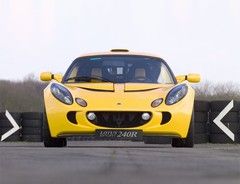
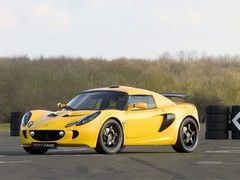
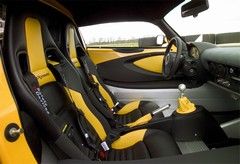
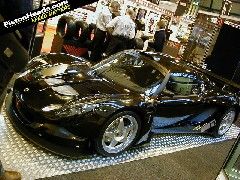



 )
)